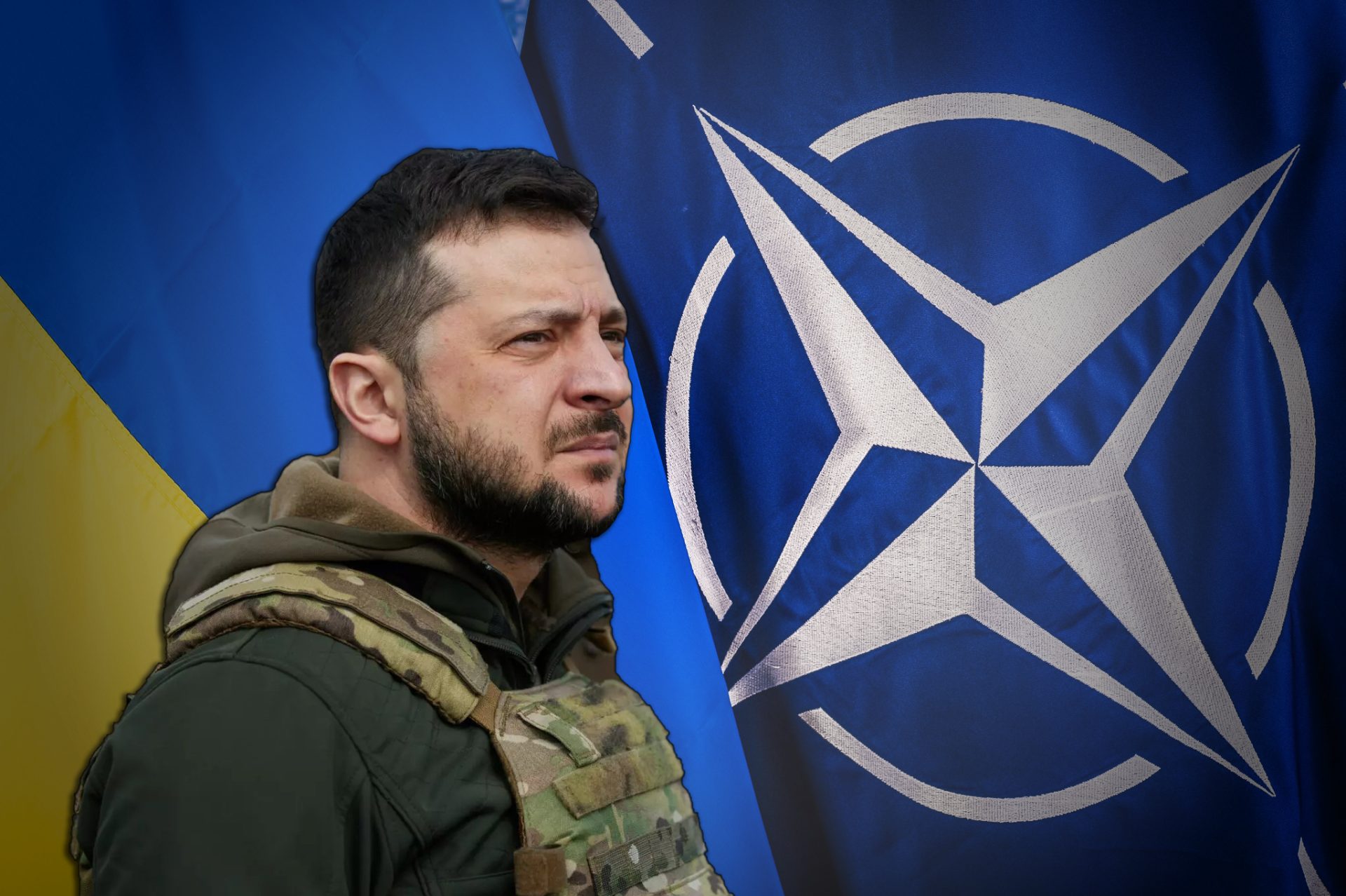
This article was first published on Dec. 15, 2023, on marxist.com
As the year comes to a close, the complete failure of the much-hyped Ukrainian counter-offensive has opened a chorus of mutual recriminations within Ukraine and between Kyiv and its imperialist puppet masters. Funding for the proxy war against Russia is drying up in Washington, Brussels and Berlin, and so western imperialism is now pushing Zelensky into a course of action which he is resisting as it spells his political (and perhaps physical) death: peace talks with Putin.
This is the same course of action that they sabotaged previously when, puffed up by their own propaganda, they predicted that their war might even end in regime change in Moscow. Whatever ends up being signed at the negotiating table will merely reflect the real situation on the ground. That situation is now much more favourable to the man in the Kremlin than it was when Boris was sent to Kyiv to scupper peace talks 20 months ago.
Putin has brushed aside all talk of peace negotiations, stating bluntly that there will be peace when his aims are achieved. The danger now for NATO is not so much an ugly stalemate as much as another humiliating defeat and a clear victory for Russia.
The western media is full of gloomy articles predicting Ukraine’s defeat if the latest package of military and financial aid from the US is not approved. Of course, some of this is meant to blackmail reluctant Republicans to vote for it. But the very fact that the same propaganda machine – that not so long ago was confidently predicting a Russian rout at the front, the collapse of the Russian economy under the weight of sanctions, and the removal of Putin through a military coup – is now openly discussing not just a stalemate but Ukrainian defeat, is a measure of how bad things are on the ground.
Gloomy assessments
The latest paper by the US-based Institute for the Study of War, usually a gung-ho outlet tending to exaggerate and hype up the position of Western imperialism in Ukraine, is entitled “Military-Strategic and Financial Implications of Russian Victory”, and opens with these lines:
“A Russian conquest of all of Ukraine is by no means impossible if the United States cuts off all military assistance and Europe follows suit… Russians have replaced (…) manpower losses and are ramping up their industrial base to make good their material losses at a rate much faster than their pre-war capacity had permitted.”
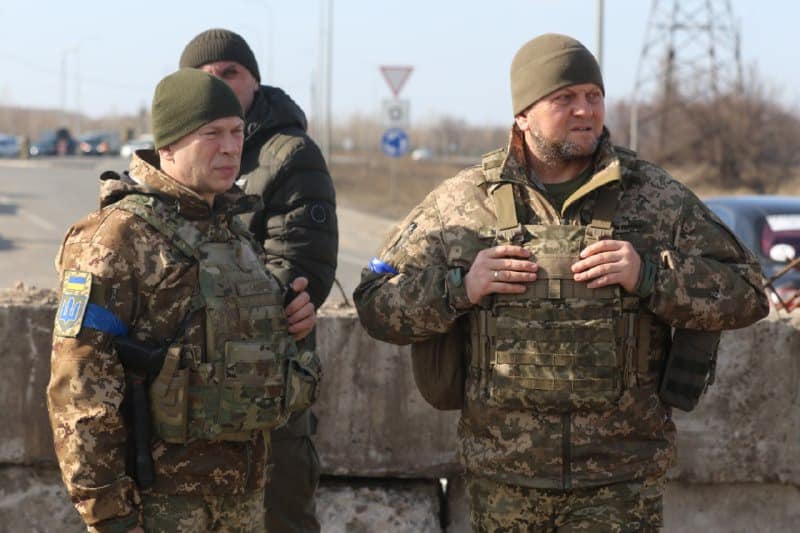
Wikimedia Commons
First off the bat in the current wave of gloomy but realistic assessments was none other than the Ukrainian commander-in-chief General Valery Zaluzhny himself on 1 November in a headline-grabbing interview with The Economist in which he admitted the war was at a stalemate. “Five months into its counter-offensive, Ukraine has managed to advance by just 17 kilometres”, the Economist opened the article. Zaluzhny, in the nicest, most diplomatic way possible, blamed the West for having “been overly cautious in supplying Ukraine with their latest technology and more powerful weapons”. He is not wrong.
The whole premise of Washington’s proxy war in Ukraine was to use Ukrainian soldiers as cannon fodder in order to weaken and wear out Russia, but at the same time to prevent escalation into an open conflict between Russia and NATO.
The main take away from Zaluzhny’s interview though is that “there is no sign that a technological breakthrough, whether in drones or in electronic warfare, is around the corner” that can change the current stalemate. Therefore, “Ukraine is stuck in a long war—one in which he [Zaluzhny] acknowledges Russia has the advantage”.
Of course, in the last few months we have seen veiled recriminations from NATO officials blaming the Ukrainians for not having properly followed the counter-offensive strategy that they advised. NATO sources have a point when they say that the Ukrainian army spent too much time defending Bakhmut for purely political and prestige reasons, thus diverting precious forces from other sectors of the frontline where they could have had a bigger impact. This is wholly in keeping with the public-opinion-seeking war of propaganda, which former TV star Zelensky has been conducting in order to secure a consistent and ever-growing supply of weapons, money and intelligence from his paymasters in the West.
Zaluzhny’s interview was not only aimed at defending his own record. It is highly unusual for an army leader to come out publicly in wartime against the country’s president. Zelensky was quick to counter-attack. In an interview with a British tabloid, he warned army chiefs not to meddle in politics and to respect the hierarchy of the chain of command.
Maryana Bezuglaya, a deputy for Zelensky’s own Servant of the People ruling party alleged that The Economist article had been placed through Czech Ukrainian oligarch Tomáš Fiala, the owner of Ukrainska Pravda, and that the aim was to undermine the president and boost the general’s electoral prospects. Bezuglaya demanded the resignation of Zaluzhny, saying he had “no plan for 2024”, only to then backtrack.
Ukrainian media reported that a recent poll by Rating revealed that a hypothetical Zaluzhny party would gain 36 percent of the vote, beating a Zelensky party, which would come second with 26.7 percent. Just in case, Zelensky decided to cool down any talk of presidential elections, which he himself had earlier announced.
Zelensky cuts a lonely figure
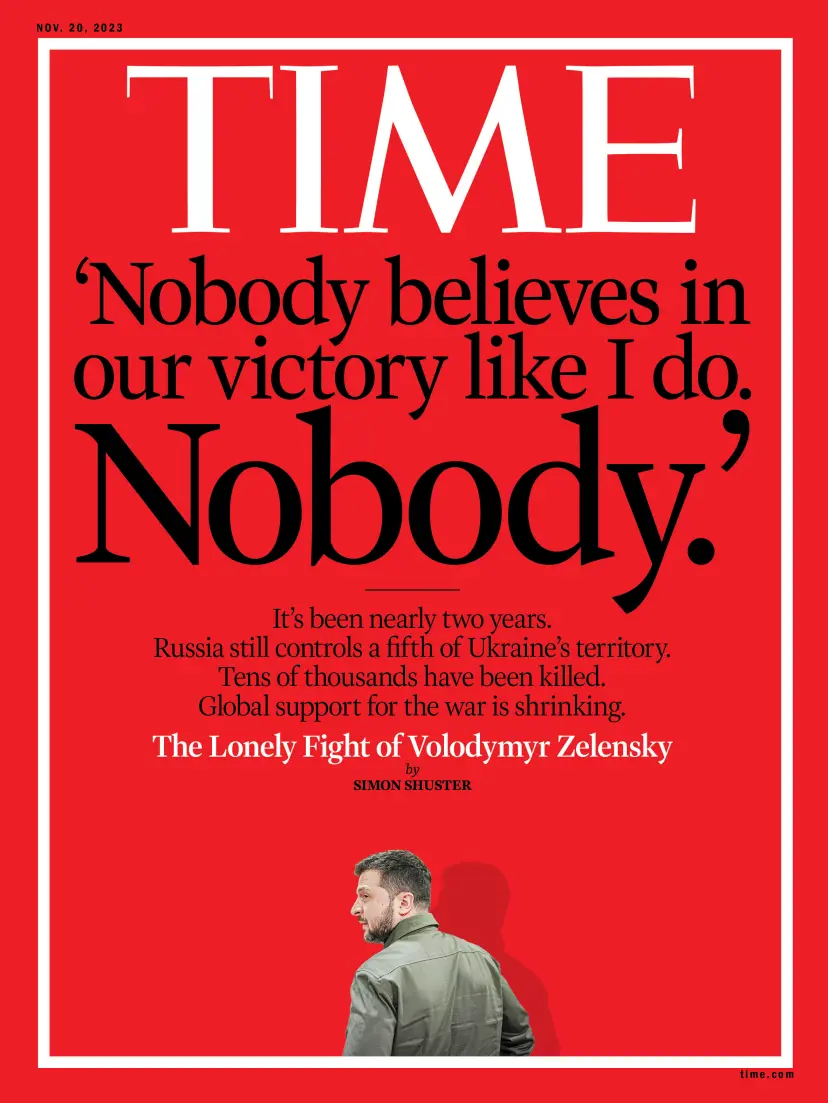
A feature length interview on the cover of Time magazine on 30 October pictured Zelensky as a lone, slightly mad figure, the only one who still believed in Ukraine’s victory. “The lonely fight of Volodymyr Zelensky” was the subheading. Gone are the days of the hero of Kyiv splashed across the frontpages of the western media.
Success has many fathers, but failure is an orphan, and now that things are going badly at the front, the mood in Kyiv’s political and oligarchic circles has become extremely fractious, the president coming under open criticism and the wildest rumours (including that Zaluzhny is a Russian asset) are given credence.
Just a few days after Zaluzhny’s interview in The Economist, his main aide was killed in a “hand grenade accident”. Zelensky himself fuelled the rumour mill with a statement about a Russian plot to cause a “Maidan 3” coup to remove him from power.
Kyiv’s mayor and former professional boxer Klitschko joined the open season with an interview with Der Spiegel in which he accused Zelensky of behaving in an authoritarian manner and comparing him to Putin: “At some point we will no longer be any different from Russia, where everything depends on the whim of one man”.
Then it was the turn of former chocolate magnate and former president Poroshenko who has presented himself as a supporter of Zaluzhny. Zelensky then decided to stop Poroshenko at the border when he was about to travel abroad on a speaking tour. Poroshenko described these actions as “anti-Ukrainian sabotage”.
Twenty months of pointless carnage
On 24 November, the head of Zelensky’s parliamentary faction Arakhamia said in an interview that in March 2022 there had been a Russian offer at peace talks, which would have meant withdrawal to pre-February 2022 borders in exchange for Ukraine remaining neutral. He added that one of the reasons the proposal was rejected was Boris Johnson’s urgent visit to Kyiv in which he insisted Ukraine should reject any deal, continue to fight and that the West would guarantee victory. Of course, the role of Boris at the time was known and we commented on it.
The significance of Arakhamia’s statement now should be seen as an attempt to shift the blame for the disastrous course of the war onto western imperialism’s shoulders: “You twisted our arm so that we would continue to fight, but have failed to provide us the means to do so”. The other implication of this is clear for everyone to see: the carnage and bloodshed of the last 20 months have been in vain. Hundreds of thousands of Ukrainian (and Russian) sons of working-class parents were sacrificed at the altar of a proxy war that NATO cannot win.
On the same day as Arakhamia’s interview, an article in the German sensationalist paper Bild “revealed” a secret plan concocted by German chancellor Scholz and US president Biden to squeeze Ukraine in order to force Zelensky into negotiations with Putin. The gist of the article was: “Ukraine will continue to be supplied with new weapons, but in the quality and quantity that is sufficient to roughly hold the current front, but not to win nor advance”. “President Zelenskyy will not be put under verbal pressure to negotiate by either Olaf Scholz or Joe Biden, but should ‘come to the realisation himself’ that a military victory against Russia is impossible and therefore move towards negotiations.”
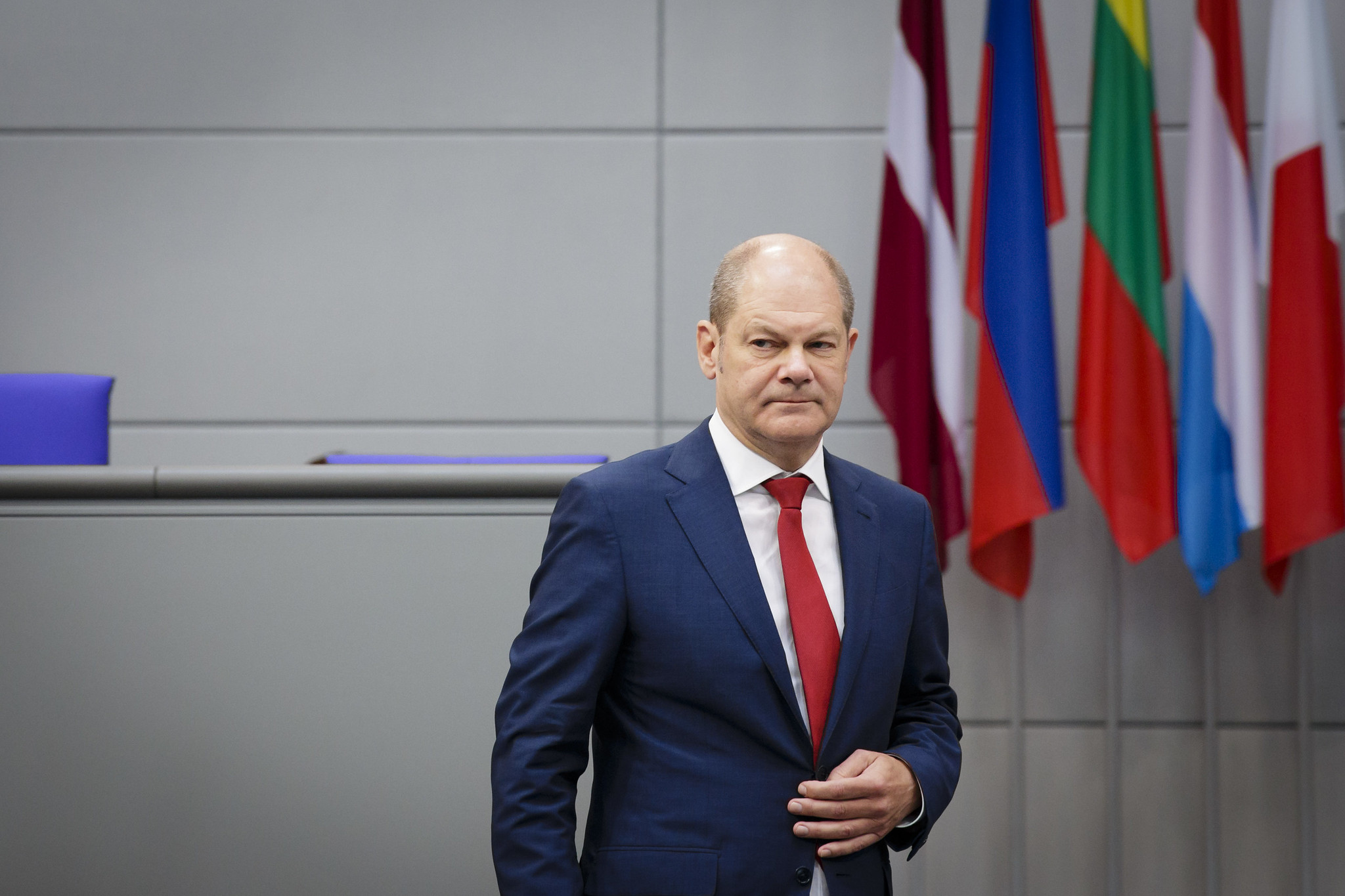
Of course, Bild should be taken with a pinch of salt, but the article is based on facts. The Ukraine war is becoming a very expensive proposition for the main NATO countries, particularly when they have nothing to show for it and no prospects of any advance on the field of battle. In the US, Biden is heading towards an election and is mired in constant wrangling with the Republicans over military aid for Ukraine. At the time of writing it is not clear that he will manage to pass the latest multi-billion dollar tranche.
The situation is similar in Germany, where Scholz is coming up against serious budgetary constraints and the far right AfD is growing in the polls. The EU itself is deeply divided over continued support for the war in Ukraine. At the time of writing Hungarian president Orban is blocking the approval of a €50 billion aid package which is necessary to maintain the functioning of the Ukrainian state. To this we have to add the election of Fico in Slovakia and the victory of the far right in the Dutch elections. The mood is summarised in the declarations of an EU official speaking on condition of anonymity: “How much more money will we pour into this black hole?”
And it is not just a question of money. The West is unable to manufacture shells and military equipment fast enough to meet the needs of the war. For months now, the US and its allies have been sending weapons to Ukraine from their own stockpiles. NATO Admiral Rob Bauer at the Warsaw Security Forum last month warned: “The bottom of the barrel is now visible.”
On the other side of the equation we have Russia, which has been able to circumvent western sanctions and its economy is expected to grow by 3.5 percent this year. At the same time it has outpaced the West in the production of shells and other military equipment, both high and low-tech.
This has allowed it to reverse the situation at the front. It is no longer the case that Russia is defending and Ukraine attacking, but rather, in several sections of the frontline Ukraine has started to fortify (copying Russian tactics), while Russia is on the offensive.
Ukrainian morale
To this we have to add the impact of a prolonged war of attrition on Ukrainian morale. This is revealed in the expansion of the draft as well as a myriad of recent incidents in which the police have raided gyms and saunas looking for men of military age to be forcibly sent to the front.
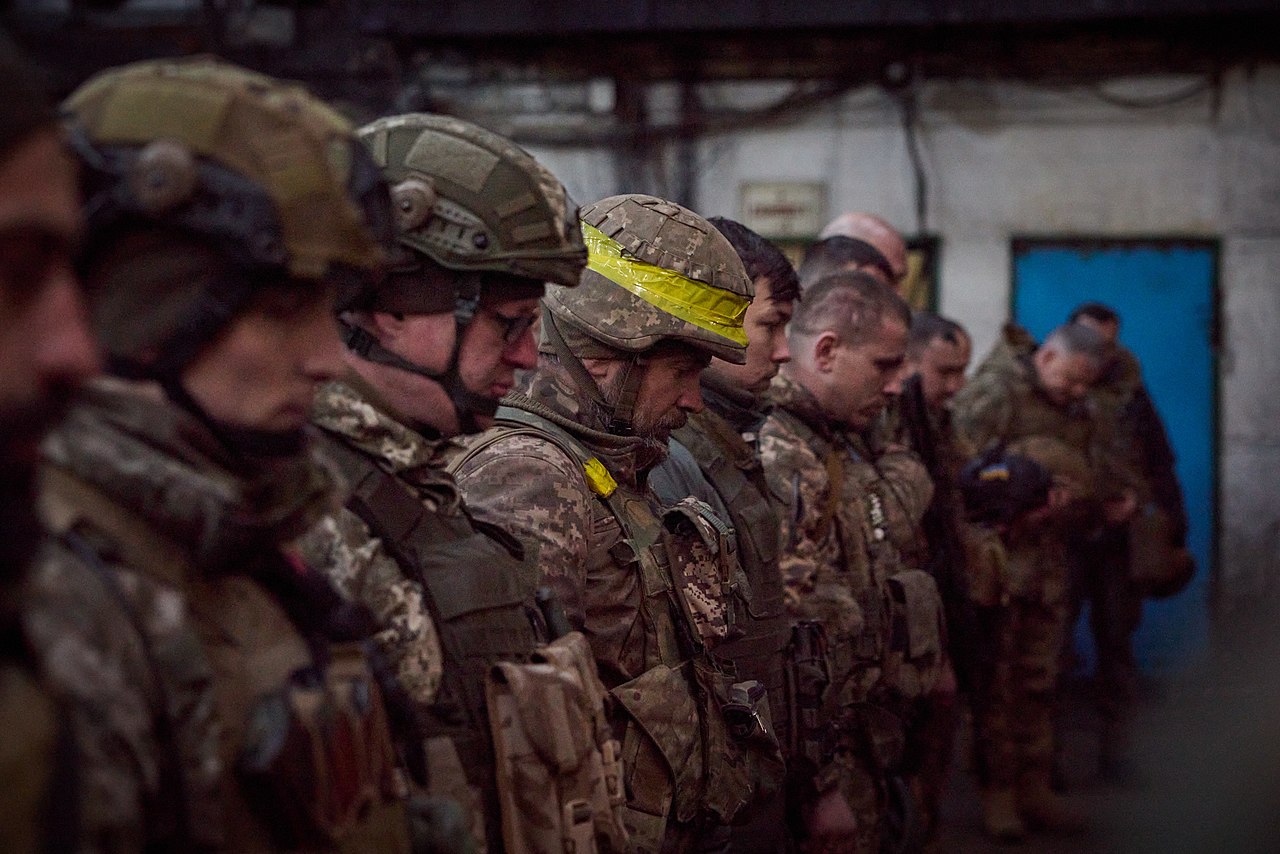
According to the BBC, 650,000 conscription-age men have left Ukraine legally or illegally. The mood is clearly starting to change. An article in the Washington Post stated that “interviews with draft-age Ukrainians suggest that many are less than eager to fight for a military and national government that is viewed as rife with corruption and incompetence.”
By examining history, we know that wars often lead to revolutions and that this is particularly the case in defeated countries. Long gone are the days of patriotic fervour and national defence. Increasingly, Ukrainians will start to ask themselves whether they have not been sacrificed at the altar of the interest of US imperialism in its conflict with Russia.
Of course, what Russia offered in the spring of 2022 – a withdrawal to pre-February 2022 borders in exchange for Ukrainian neutrality – is no longer on offer. Russia will keep what it has gained and is aiming to advance even further. At his televised end of year press conference, as we stated at the beginning, Putin was clear: “peace will come when our aims are achieved”. He also made a point of saying that “Odessa is a Russian city”.
Putin might not be able to increase the rate of mobilisation, but the troops he has at his disposal are enough to achieve his aims as long as he is able to supply them. He is counting that in the war of attrition, time is on his side. So far, facts are proving him right. There have been protests in Russia by mothers and wives of soldiers who were mobilised in September 2022, demanding that they should be allowed to return home after over a year of fighting. But as long as the economy is recovering and the war seems to be going his way, he can count on popular support and acquiescence.
NATO humiliated
From an international point of view, what is at stake is a humiliating defeat for NATO. Facts are stubborn things. What we have in Ukraine in relation to the spring/summer counter-offensive is a NATO armed, supplied and trained army unable to overcome Russian fortifications. More than that, the threat is now that of a collapse of the Ukrainian frontline and a further Russian advance. The West is facing another Afghanistan-style humiliation.
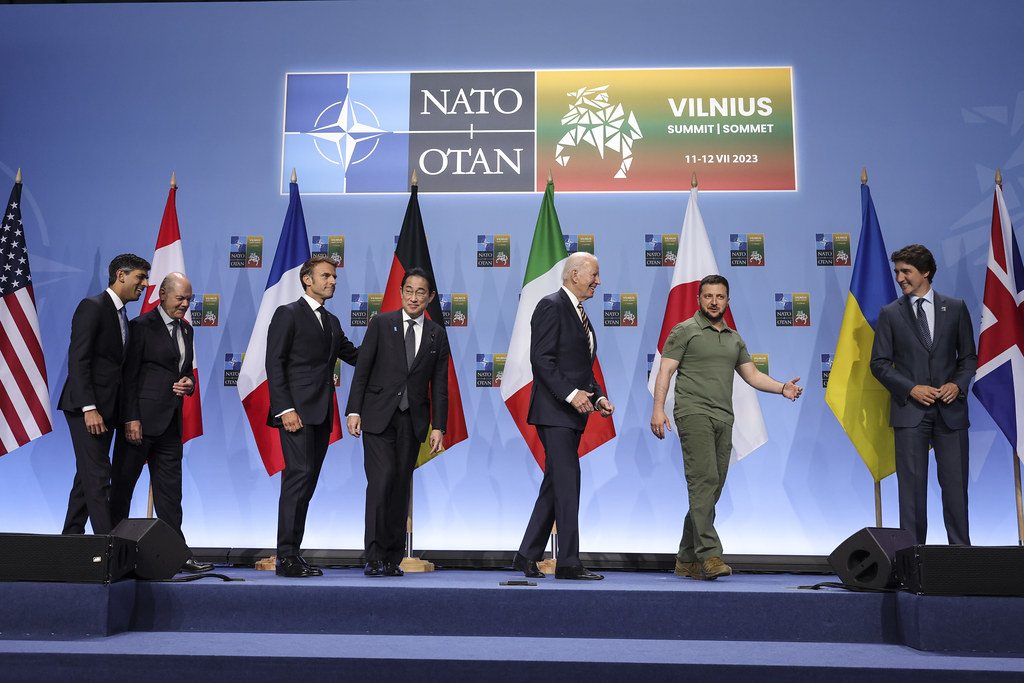
This is a measure of the relative decline of US imperialism on the world scene. This is the most powerful and reactionary imperialist country on the planet, whose military spending equals that of the next ten top countries combined. And yet, it is unable to decisively impose its will in any region of the world. The crisis of capitalism makes the world a much more turbulent place. Being its main policeman is an increasingly complex job, with trouble flaring everywhere and other regional powers, sensing weakness, ganging up to defy the top boss.
The escalation of Israel’s aggression against the Palestinians, so close in time to the war in Ukraine, has also revealed the full extent of the West’s hypocrisy when it comes to “violation of international law”, “war crimes”, etc. When these are committed by our enemies, they are shouted from the rooftops, exaggerated, or directly invented, in order to justify our reactionary imperialist war aims. When they are committed by our allies, they are then explained away in the name of the “right to self-defence”.
The main victims in this whole affair are the working people of Ukraine first and foremost. From the very beginning the spokespersons of US imperialism said it clearly: we will fight this war in our interest (to weaken rival Russian imperialism) until the last drop… of Ukrainian blood. Now that the war is not going their way, they are abandoning the Ukrainians to their fate, forcing them into what will be a detrimental agreement with their aggressive imperialist neighbour. There is a lesson here for ‘small’ nations everywhere: they are just used by the big powers as small change, to justify their actions and then discarded when they are no longer useful or have become too expensive.
From the beginning of the conflict, revolutionary communists have stood firm on the principle that the main enemy of the working class is at home. The Russian revolutionary Marxists opposed Putin’s reactionary invasion of Ukraine, motivated not by “the defence of Russian speakers” nor the “denazification of Ukraine”, but rather by the national security interests of the Russian ruling class. Revolutionary Marxists in the West denounced first and foremost ‘our own’ imperialist ruling class, the most reactionary force on the planet.

